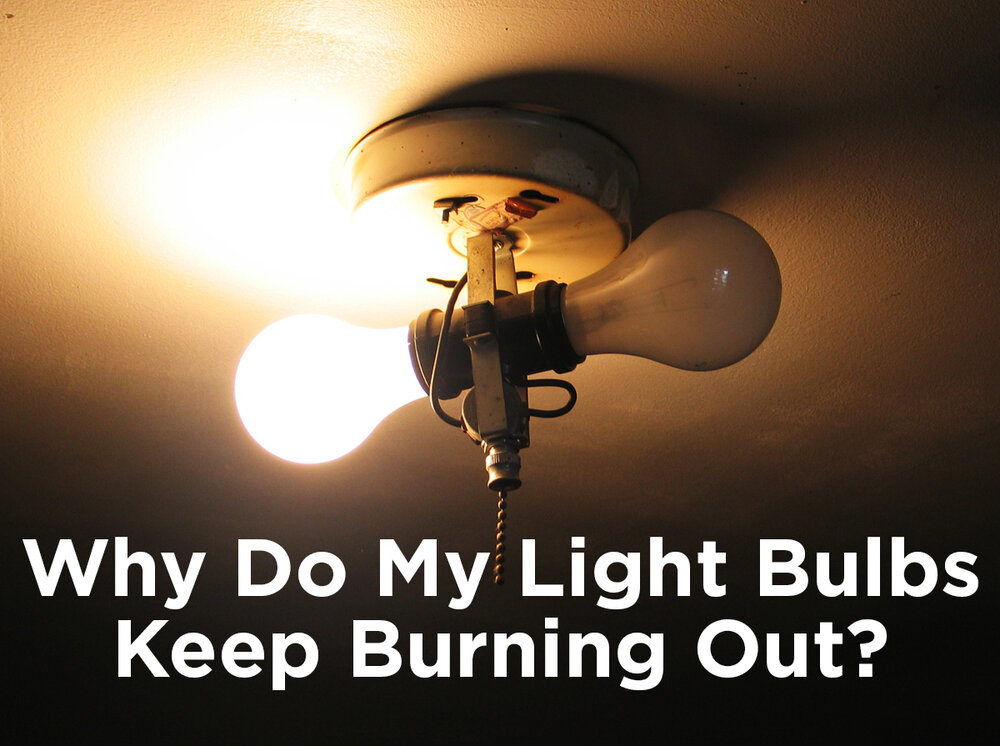
A fluorescent bulb is burned out when it fails to light up or flickers continuously. Dark spots at the ends of the tube often indicate the bulb’s end of life.
Understanding when to replace a fluorescent bulb is essential for maintaining an efficient lighting system. Fluorescent bulbs are widely used due to their energy efficiency compared to traditional incandescent bulbs. They operate by ionizing mercury vapor, which illuminates the phosphor coating inside the tube.
Over time, this process degrades the bulb’s components. Recognizing signs of wear, such as flickering, dimming, uneven lighting, or discoloration, can help prevent inadequate lighting conditions. Timely identification of a burned-out bulb not only ensures consistent lighting but also helps in conserving energy and reducing overall maintenance costs. Keeping your lighting system in prime condition is simple once you know the telltale signs of a fluorescent bulb’s expiration.
Recognizing Fluorescent Bulb Failure
Knowing when to replace a fluorescent bulb can save time and enhance room brightness. Regular checks are essential for maintenance. Signs of wear or failure often appear before a bulb completely stops working. This section addresses how to spot these signs effectively.
Visual Inspection Of The Bulb
Start by examining the bulb closely. Look for dark areas near the ends. These areas indicate the bulb’s age and usage. A black band can suggest that it’s time for a replacement. Also, check for signs of cracks or damage. Any physical defects could cause performance issues or be a safety hazard.
Flickering And Light Output Changes
Flickering can be a telltale sign of a fluorescent bulb nearing its end. It’s not just about simple flickers; look for consistent or severe flickering. Light output can also change. If you observe a noticeable reduction in brightness or a color shift, the bulb might be failing. Sudden light outages indicate the need for an immediate change.

Credit: blog.1000bulbs.com
Start-up Issues As Indicators
Fluorescent bulbs can last years, but they don’t last forever. If you’re flipping the switch and nothing happens, it may not be a power issue, but a bulb issue.
Start-up issues are common indicators that a fluorescent bulb is on its way out. Let’s delve into a couple of tell-tale signs.
Delayed Start
A healthy fluorescent bulb should light up instantly. A significant delay suggests it’s time for a replacement. Listed below are signs related to delayed start:
- Slow light-up: The bulb takes longer to turn on.
- Flickering: The bulb flickers before fully lighting up.
Repeated Striking
Repeated striking is another red flag. This is what to look for:
- Striking sound: A noticeable clicking sound when trying to start.
- Continuous cycling: The bulb attempts to light, fails, and tries again.
This repetitive process can wear the bulb out quickly and suggests it’s coming to its end.
Physical Signs Of Wear
Knowing when to replace a fluorescent bulb is simple. Look for tell-tale signs. Bulbs show clear physical wear that signal it’s time for a change. Keep an eye out for color changes and electrode damage.
Discoloration Of The Bulb
Fluorescent bulbs that need changing often turn colors. Watch for dark patches. These typically appear at one or both ends of the tube. Blackening suggests the bulb is at its life’s end.
Different colors may also show up along the bulb. This indicates age or malfunction. If you see these changes, plan for a bulb replacement soon.
Assessing The Electrodes
End-of-life clues also come from the electrodes. Found at the bulb ends, electrodes are essential.
- Check for a change in shape or color.
- Look for any signs of melting or deformity.
- Sputtered material around electrodes indicates wear.
Take a close look at these signs to ensure your bulb is in good shape. Prevent safety hazards by staying alert to these indicators.
:max_bytes(150000):strip_icc()/light-bulbs-burning-out-early-1152844-03-898056d7eb5d4fc391e5f31d80f79a17.jpg)
Credit: www.thespruce.com
Auditory Clues
Listening closely to your fluorescent light fixture can reveal vital signs of its health, especially when a bulb is nearing its end. If your lighting starts to whisper its troubles, it’s time to tune in to the auditory clues that signal a bulb may be burned out. Recognizing these sound signals saves you from the sudden dimming of your space.
Strange Noises From The Fixture
A well-functioning fluorescent bulb is generally quiet. Unusual sounds often indicate trouble. If you hear anything out of the ordinary emanating from your fixture, it’s a sign that the bulb could be on its last flicker.
Buzzing Or Humming Sounds
Fluorescent bulbs are known for a distinctive buzz or hum when they’re not working correctly. Below are common auditory symptoms to listen for:
- Faint buzzing when the light is turned on may suggest the bulb is struggling to illuminate.
- A loud humming indicates the bulb’s internal components may be failing.
These sounds can also point to issues with the ballast, the component that regulates current to the bulb. Early detection is key to maintaining a well-lit and safe environment.
Testing For Continuity
When a fluorescent bulb stops lighting up, it’s crucial to test for continuity. Continuity tests check if electricity flows through the bulb. If a bulb shows no continuity, it’s burned out and needs replacement. This step-by-step guide helps to perform a continuity test with tools like a multimeter.
Using A Multimeter
A multimeter is a handy tool for testing bulbs. Follow these steps:
- Power off the fixture and remove the bulb.
- Set the multimeter to the ohms setting.
- Touch one probe to each end of the bulb.
- Observe the multimeter’s display.
A change in reading means the bulb is good. No change indicates a burned-out bulb.
Safety Precautions During Testing
Safety cannot be overlooked. Keep these points in mind:
- Always disconnect power before handling bulbs.
- Wear gloves to protect from glass shards.
- Ensure the multimeter is in good condition.
- Never force a bulb out of its socket.
Preventive Measures And Maintenance
Bright, energy-efficient lighting is key in many spaces. Fluorescent bulbs are popular choices. Keeping them in good condition is essential. Preventive maintenance saves time and money. It helps avoid sudden burnouts. Learn two important ways to maintain your fluorescent bulbs: Regular Cleaning and Timely Replacements.
Regular Cleaning
Maintaining clean bulbs is crucial. It ensures optimal performance. Clean bulbs emit brighter light. This promotes a better environment. Here’s how to clean them:
- Power off the lights.
- Let bulbs cool down.
- Use a soft cloth to wipe the bulbs.
- Avoid harsh chemicals.
- Ensure no moisture enters the fixture.
Timely Replacements
Fluorescent bulbs have a lifespan. Replace them before they fail. Here are signs it’s time:
- Darker ends on the bulb.
- Flickering lights.
- Reduced brightness.
- Strange sounds.
Keep track of the age of your bulbs. Replace them proactively. Use this table to schedule replacements:
| Bulb Type | Hours Used Daily | Replace Every (Years) |
|---|---|---|
| T8 | 10 hours | 5 years |
| T12 | 10 hours | 4 years |
| CFL | 10 hours | 7 years |
Always have spare bulbs on hand. Swift replacements ensure consistent lighting.
:max_bytes(150000):strip_icc()/light-bulbs-burning-out-early-1152844-03-898056d7eb5d4fc391e5f31d80f79a17.jpg)
Credit: www.thespruce.com
Frequently Asked Questions Of How To Tell When A Fluorescent Bulb Is Burned Out
What Are Signs Of A Bad Fluorescent Bulb?
Fluorescent bulbs nearing the end of their life may flicker, buzz, or struggle to light up. You might notice a significant delay when turning on the switch or see darkened areas near the bulb’s ends. These signs indicate it’s time for a replacement.
Can Fluorescent Bulbs Burn Out Suddenly?
Yes, fluorescent bulbs can suddenly burn out. However, it’s more common for these bulbs to exhibit signs of wear over time, such as flickering or dimming, before they completely fail to illuminate. A sudden burnout often points to a faulty bulb or fixture problem.
How Long Does A Fluorescent Bulb Last?
On average, a fluorescent bulb lasts about 7,000 to 15,000 hours. Factors affecting lifespan include bulb type, usage patterns, and the quality of the fixture. It’s important to replace bulbs that are underperforming to maintain optimal lighting and efficiency.
Do Fluorescent Bulbs Dim Before They Die?
Fluorescent bulbs may dim gradually before finally burning out. This is due to phosphor degradation and loss of mercury vapor pressure within the bulb. Regularly checking and replacing dim bulbs ensures better light quality and fixture performance.
Conclusion
Recognizing a failed fluorescent bulb is straightforward with these tips. Ensure your safety and efficiency by spotting the telltale signs early. Keep your space brightly lit by replacing bulbs promptly – your eyes and energy bills will thank you. Remember, regular checks prevent flicker frustration.
Stay illuminated and proactive in your lighting maintenance.




















